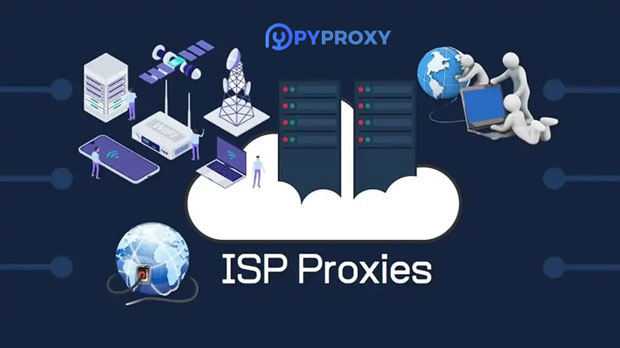How to configure SOCKS5 proxy in Michigan to improve network access speed?
In today's Internet era, the improvement of network speed has become an important issue for every user and enterprise. Especially for users in Michigan, how to effectively improve network speed and overcome geographical limitations has become a major challenge in daily internet usage. Configuring socks5 proxy is a good choice as it can improve access speed while also providing higher anonymity and security. SOCKS5 proxy is a protocol type in network proxy, which can help users to forward traffic through proxy server, bypass regional restrictions and optimize network access speed when accessing the InternetWe will analyze in detail how to configure SOCKS5 proxy in Michigan, including configuration steps, required tools, and its working principle. In addition, we will also explore how SOCKS5 proxy can improve network speed and address some issues that Michigan network users may encounter by reducing latency, optimizing bandwidth utilization, and enhancing access stability. Through this article, readers can learn about the practical application of SOCKS5 proxy and how to maximize network experience through reasonable configurationWhat is SOCKS5 proxy Before delving into how to configure SOCKS5 proxy, it is first necessary to understand what it is and how it works. SOCKS (Socket Secure) protocol is a universal network protocol that allows clients to communicate with target servers through proxy servers. Unlike traditional HTTP proxies, SOCKS proxy is a low-level protocol that does not care about the type of data being transmitted, and therefore supports almost all types of traffic, including HTTP, HTTPS, FTP, etcSOCKS5 is the latest version of the SOCKS protocol, providing various enhanced features, particularly in terms of security, performance, and flexibility. SOCKS5 proxy allows users to freely switch between different applications, which not only improves data transmission speed, but also ensures better anonymity because it does not change the content of data packets, only responsible for forwarding. Therefore, socks5 proxies are often used to bypass geographical restrictions, improve online gaming experience, and protect user privacyHow can SOCKS5 proxy improve network access speedThe main reasons why configuring SOCKS5 proxy can help Michigan users improve network access speed are as follows:1. Reduce latencyDelay is one of the key factors affecting network speed. SOCKS5 proxy can effectively reduce latency during data transmission by selecting servers that are geographically close. If you choose a socks5 proxy server closer to Michigan, it can enable packets to reach the target website in a shorter time, thereby reducing loading and response times2. Bypass network congestionDuring peak network traffic, some areas in Michigan may experience bandwidth restrictions or network congestion. When using SOCKS5 proxy, the proxy server can choose the best path between different routes, thereby reducing congestion and data loss, which not only improves speed but also ensures stability3. Intelligent routingSOCKS5 proxy can intelligently select the optimal routing path. By utilizing the efficient data forwarding mechanism of proxy servers, it can automatically select the fastest server node for users, avoiding the bottleneck or delay problems that may exist in traditional path selection, and further improving the response speed of the network4. Improve bandwidth utilizationCompared to traditional proxy protocols, SOCKS5 is more efficient in utilizing bandwidth. It can directly transmit various types of data without changing the data flow, thus avoiding unnecessary bandwidth waste and making more efficient use of bandwidth resources, thereby improving network speedHow to configure SOCKS5 proxy: detailed stepsFor users in Michigan, configuring SOCKS5 proxy is not complicated. Here is a detailed step-by-step guide: 1. Choose a reliable SOCKS5 proxy service providerWhen choosing SOCKS5 proxy services, users should prioritize companies that provide high-speed, secure, and stable proxy services. There are many service providers on the market that offer SOCKS5 proxies, including some well-known VPN service providers, who often provide multiple types of proxy servers for users to choose from. When choosing, the following points should be noted:- Proxy server location: Choose a node close to Michigan or the target website server to effectively reduce latencyProxy speed and bandwidth limitations: Confirm whether the proxy provides sufficient bandwidth to avoid slow speeds caused by insufficient bandwidth- Encryption and Security: Although SOCKS5 proxy itself does not provide encryption function, choosing a proxy service provider that provides encryption function can effectively improve the security of data transmission 2. Get configuration information of SOCKS5 proxyAfter registering and purchasing proxy services, service providers usually provide a set of SOCKS5 proxy configuration information, including the following:Proxy server address (IP address or domain name)- Port number- Username and password (if the proxy service provider provides authentication function)These pieces of information are necessary conditions for configuration 3. Configuring SOCKS5 Proxy in Operating SystemWindows operating system1. Open the "Settings" application and click "Network and Internet"2. In the "Proxy" option, find "Manual Proxy Settings"3. Enable the 'Use Proxy Server' option4. Enter the address and port number of the proxy server, and save the settings5. If the proxy requires authentication, check the "Require username and password" option and enter the provided username and passwordMacOS operating system1. Open "System Preferences" and click on "Network"2. Select the network connection you are currently using (such as Wi Fi or Ethernet)3. Click on 'Advanced' and then switch to the 'Proxy' tab4. Check 'SOCKS Proxy' and enter the proxy server address and port number5. If authentication is required, please enter the corresponding username and password 4. Configure SOCKS5 proxy for browsers or other applicationsIf you only wish to use SOCKS5 proxy in specific applications (such as accessing web pages or playing online games in a browser), you can configure the proxy separately in that programConfiguring SOCKS5 Proxy in Browser-Google Chrome: You can use extensions such as Proxy SwitchyOmega to configure SOCKS5 proxy. Through these extensions, you can easily manage different proxy servers-Mozilla Firefox: Go to the settings page, select "Network Settings", then choose "Manually Configure Proxy" in the proxy configuration, and fill in the server address and port number of the SOCKS5 proxyConfigure SOCKS5 proxy in other applicationsMost applications that support network connectivity can configure SOCKS5 proxy through settings options. Usually, you only need to enter the address and port of the proxy server, as well as the corresponding authentication information (if needed)Advantages and limitations of SOCKS5 proxyAdvantages1. Improve anonymityWhen using SOCKS5 proxy, the user's real IP address is hidden, and the proxy server will replace the user to communicate with the target website, providing a certain degree of privacy protection2. Strong compatibilityThe SOCKS5 proxy protocol supports almost all types of network traffic, making it more flexible than other proxy protocols such as HTTP and suitable for various application scenarios3. Breaking through geographical limitationsIf Michigan users need to access websites or applications that are geographically restricted, SOCKS5 proxy can help users overcome these restrictions and achieve a better online experience by selecting proxy servers in different countriesLimitations1. Not providing encryptionSOCKS5 proxy does not encrypt traffic, although it can hide the user's IP address, it does not have data encryption function itself. Therefore, in certain scenarios that require high security, it may be necessary to combine it with other encryption protocols2. Additional configuration may be requiredAlthough SOCKS5 proxy is relatively simple, configuring it in some applications may require additional steps, especially when the application does not support the SOCKS5 protocol and may require the use of third-party toolsConclusion: How to maximize the use of SOCKS5 proxy to improve network speedConfiguring SOCKS5 proxy is an effective means for Michigan users to improve network access speed. By selecting proxy servers reasonably and configuring the correct proxy information, users can effectively reduce latency, bypass network bottlenecks, and improve bandwidth utilization, thereby enjoying a smoother internet experience. Meanwhile, the high compatibility and anonymity of SOCKS5 proxy enable it to improve network speed while also protecting user privacy
2025-01-08
























































